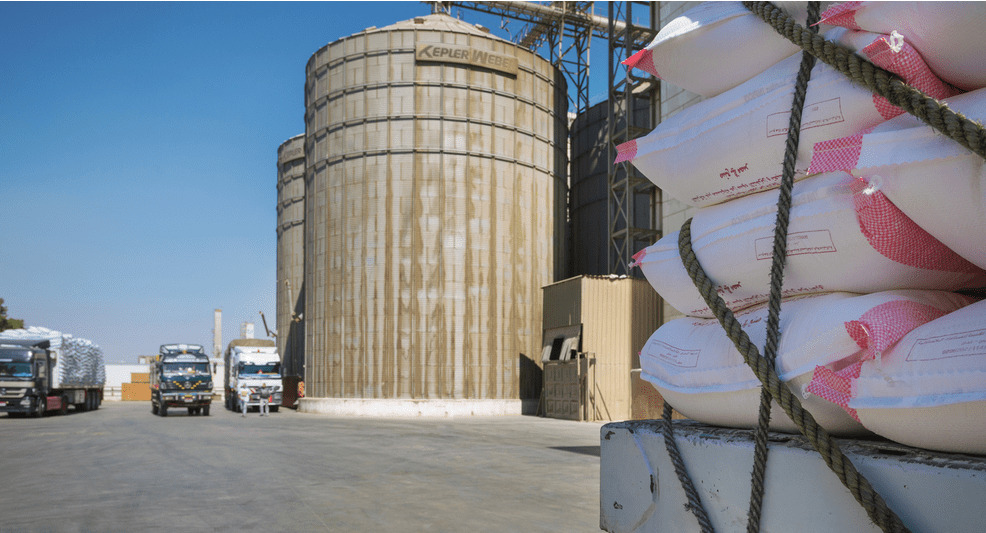WITH a second consecutive bumper wheat harvest almost complete, a seemingly endless supply of cheap Russian wheat continues to hit the international market, underpinning the nation’s position as the world’s number one exporter and alleviating global price pressures stemming from Putin’s invasion of Ukraine in February last year.
In a speech last week, Russia’s Agriculture Minister Dmitry Patrushev increased the Russian grain production outlook for the 2023-24 season to 135 million tonnes (Mt), including 90Mt of wheat. This is second only to last season’s total grain production of 157.7Mt, which included a record 104.4Mt of wheat.
While the official production projection is lower than that of Black Sea analyst SovEcon, currently pegging the crop at 91.6Mt, Russian agricultural consultancy IKAR at 92Mt, and domestic logistics giant Rusagrotrans at 92.9Mt, it is significantly higher than the 85Mt plugged into the USDA’s September global supply-and-demand grid. It will be interesting to see if that forecast is increased in the October update, which is due for release later this week, as the USDA is still low-balling last year’s crop at 90Mt.
According to the European Commission’s Joint Research Centre Monitoring Agricultural Resources (JRC MARS), a good production outlook remains intact for all Russian crops despite some late-season weather extremes. Its latest Russian bulletin issued October 2 pegged the wheat crop at 89.7Mt off 28.4 million hectares (Mha) for an average yield of 3.15t per hectare. This is 13.7pc lower than JRC MARS’ final 2022-23 production estimate of 103.9Mt off 29.2Mha and an average yield of 3.56t/ha.
Winter wheat only made up 53.1pc of the total harvested area at 15.1Mha, down 9.3pc year on year, but with an average yield of 4.22t/ha, the production forecast of 63.7Mt represents 71 percent of the projected total wheat output. The harvested spring wheat area is up 6.4pc compared to 2022-23 at 13.3Mha, but the yield outlook is 18.4pc lower at 1.95t/ha due to an unseasonably hot and dry finish for a final production estimate of 26Mt, 13pc lower than last year’s harvest.
Dip in barley production
JRC MARS is pegging the Russian barley crop at 21.9Mt, 4pc lower than last season, despite a 6.2pc increase in the harvested area to 8.3Mha. The average yield is expected to fall by 9.9pc from 2.94t/ha to 2.65t/ha.
In complete contrast to wheat, spring planting dominates the barley production matrix in Russia, with 91pc of the harvested area and 84.6pc of the production estimate. Spring barley production is forecast to be 6.5pc lower year on year at 18.6Mt, off a harvested area of 7.5Mha, 5.3pc higher than in 2022, and a projected average yield of 2.47t/ha, 11.2pc higher than last year. The winter barley area of 700,000ha is expected to produce 3.4Mt, with an average yield of 4.55t/ha.
According to JRC MARS, Russia’s 2023 corn crop is likely to be 12.1pc higher than in 2022 at 17Mt. With the harvested only 3.3pc higher at 2.6Mha, the yield has done most of the work, 8.6pc higher than last year at 6.46t/ha.
Russian wheat gains market share
Russian wheat exports hit an all-time monthly record of 5.8Mt in September, according to the Russian Grain Union, and total exports in the first quarter of the 2023-24 marketing year (July-June) are 59pc higher than the same period in 2022 at around 15.3Mt. Russia has captured 28pc of global wheat exports in the first three months of the marketing year compared to an annualised share of 21pc last year.
Total grain exports for the same period totalled 18.2Mt, with Egypt the biggest buyer on 2Mt, 9.1pc higher than Q1 2022-23. Turkiye was the second biggest customer with 1.85Mt, down 10.3pc year on year, and Iran dropped from first to third on the podium with imports of 1.8Mt, down from 2.4Mt a year earlier.
Wheat exports from Russia’s Black Sea ports in the week to October 4 reportedly increased by 30pc to 1Mt compared to the same period in 2022, with Egypt, Bangladesh and Iran the key destinations. However, October exports are forecast at 4.5Mt, much less than the September record and down from 4.9Mt last year.
The USDA has Russian wheat exports for the 2023/24 marketing year pencilled in at 49Mt in its September supply and demand update, 1Mt higher than in August and 3Mt higher year-on-year. This is in line with SovEcon, currently assessing export potential at 48.9Mt, 2Mt higher than its final number for 2022/23.
Russia’s official statistical office, Rosstat, reported last week that wheat stocks held on-farm across Russia stood at 28.8Mt, 9pc lower than at the same time last year. Following last year’s harvest, stocks have been running at post Soviet-era highs but have dipped below record levels amid an extremely buoyant Black Sea export program and lower production. Despite the decline, on-farm stocks are still 21pc higher than the long-term average.
Looking for floor price
With the supply glut depressing global prices, Moscow is attempting to use its dominant position to establish a floor in the market. Not only would that placate its farmers, who are becoming increasingly distressed by dwindling incomes, as well as cool domestic flour prices by limiting exports, it would also boost the Kremlin’s war-strained coffers by generating additional tax revenues.
Officials have been trying to enforce a price floor for wheat exports by refusing to grant export documents to lower-cost shipments, forcing some traders to renegotiate or even cancel deals. Last month, Egypt booked a massive quantity of Russian wheat in a private deal at a price well below the unofficial floor for public tenders. Several days later, Egypt said that the successful traders would be permitted to supply the grain from origins other than Russia.
The application of the floor has been quite inconsistent, with sales under more opaque pricing mechanisms fluctuating at much lower levels. It appears the trick is for traders to sell Russian wheat on an optional-origin basis, which implies they haven’t violated the unofficial floor price. That way, Russian wheat keeps marching out the door, and the Agriculture Ministry supposedly saves face.
However, the lack of visibility over pricing is creating turmoil in international markets, making it extremely difficult for merchants and global importers to take positions and anticipate market trends. But a huge surplus combined with a weak ruble and strong US dollar that keeps Russia at the front of the global wheat market and droughts reducing output in other origins, the world’s reliance on Russian wheat supply appears set to continue for much of 2023-24.
Source : Grain Central















